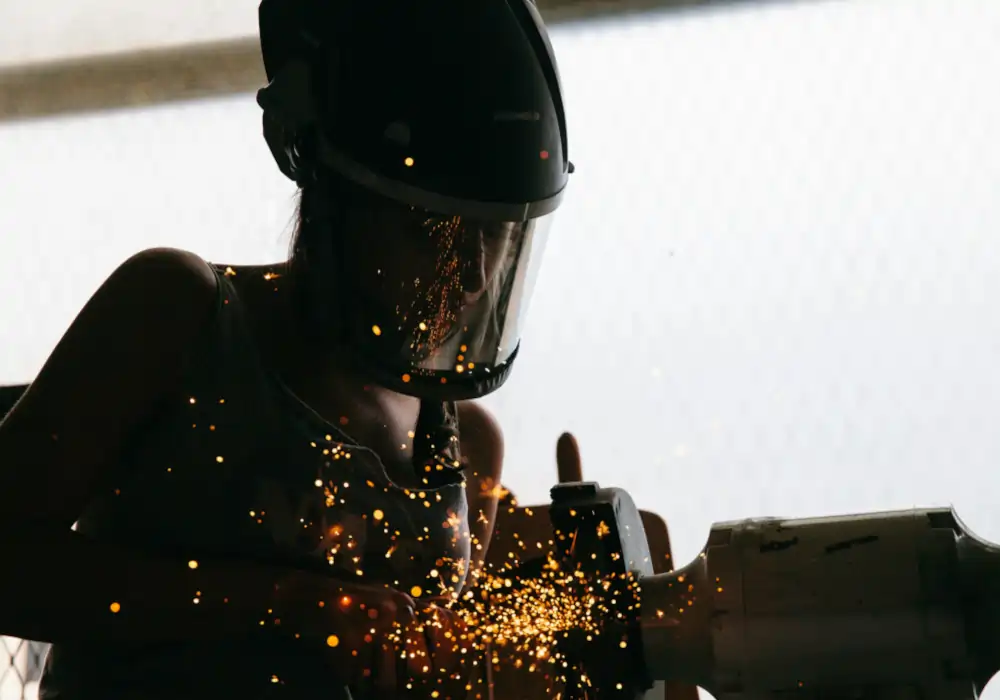Essential Welding Supplies Every Beginner Needs
When deciding to delve into the realm of welding, an exciting world of innovation awaits you. Welding encapsulates an integral section of the building and manufacturing industry, creating durable bonds that hold the world’s infrastructure together. For this reason, beginner welders must be adequately equipped, and The Edge WA is an excellent resource for those looking to start their welding journey. This article aims to guide you through the essential welding supplies every beginner needs, ensuring a safe, efficient start to your journey.
Firstly, it’s imperative to understand what welding is. Welding, in its simplest terms, is the process of joining two materials, usually metals, by subjecting them to high heat to melt the parts together and allow them to cool, causing fusion. It’s an art that requires skill, precision, and most importantly, the right tools.
Welding Machine:
At the heart of your welding supplies is the welding machine, a crucial piece of equipment that generates the heat necessary for fusing materials. There are various types of welding machines, each suited for different tasks and skill levels. For instance, the MIG (Metal Inert Gas) welder is known for being user-friendly, making it an excellent starting point for beginners. On the other hand, the TIG (Tungsten Inert Gas) welder offers more precision but requires greater skill, while Stick Welders and Flux-Cored Welders are more rugged and versatile for outdoor work.
Safety Gear:
Welding is a high-risk task, and safety must always come first. Necessary safety gear includes:
Welding Helmet: The helmet provides crucial protection for the face, neck, and eyes from dangerous sparks, intense light, and harmful infrared and ultraviolet radiation during welding. Without it, welders risk serious injuries, including burns and vision damage, making it an essential piece of safety equipment.

Safety Glasses: Safety goggles should be worn under your welding helmet to provide an extra layer of defense against flying particles and debris. This added protection ensures that even if something bypasses the helmet, your eyes remain shielded from potential hazards.
Welding Gloves: High-quality welding gloves are essential for safeguarding your hands from extreme heat, sparks, and potential burns during welding. Additionally, they offer protection against electric shock, which is a key safety concern when handling welding equipment.
Welding Jacket: A welding jacket or apron acts as a protective barrier, shielding your body from dangerous sparks, intense heat, and molten metal spatter that can occur during the welding process. Made from flame-resistant materials, it ensures your skin and clothing remain safe from burns and other potential hazards.
Welding Boots: Welding boots should ideally be made of durable leather to provide robust protection against heavy falling objects, hot metal, and flying sparks. Additionally, they offer insulation from open circuits, reducing the risk of electric shock during the welding process.
Welding Tools:
Next, the basic welding tools include:
Angle Grinders: Wire brushes and grinders are essential tools for cleaning, polishing, and grinding metal surfaces both before and after welding. They help remove rust, paint, or slag, ensuring a clean weld area and smooth finish for optimal results.
Wire Brushes: A wire brush is an essential tool for cleaning the weld surface by effectively removing rust, scale, and paint before starting the welding process. This preparation ensures a cleaner surface, allowing for better weld penetration and stronger, more reliable welds.
Welding Pliers: Wire cutters are indispensable for trimming welding wire to the desired length, ensuring precision during the welding process. Additionally, they help remove hot, welded material safely, preventing damage to the workpiece and enhancing the overall quality of the weld.
Chipping Hammers: Chipping hammers are essential tools for breaking and removing slag, the hardened residue left after welding. By efficiently clearing away the slag, they help expose the clean weld beneath, ensuring a smooth and polished finish.
MIG Pliers: MIG welding pliers are versatile tools specifically designed to maintain and clean MIG welding equipment. They can efficiently clean the MIG gun nozzle, trim welding wire, and remove spatter buildup, ensuring smooth and uninterrupted welding operations.
Clamps: Clamps are essential tools for securely holding pieces of metal in place during the welding process. They ensure precise alignment and stability, preventing movement while you weld for a more accurate and durable joint.
Welding Accessories:
An array of accessories exists to make the welding job more manageable:
Welding Cart: This is vital for organizing your workspace and making the transportation of your equipment easier.
Welding Magnets: They help to hold the workpieces at the correct angle when welding.
Chalk/Paint Pencil: This tool assists in marking cuts or welds on the metal.
Welding Positioner: It helps to rotate the piece being welded, enabling the welder to stay in one position, leading to better weld quality.
Welding Blankets: These provide protection against sparks and spatter.
Understanding these welding supplies is merely the start of your welding journey. A world of fine craftsmanship awaits, as you learn and grow in your welding proficiency. A handy resource every beginner or professional welder should consider visiting is The Edge WA. This site offers an extensive catalogue of welding supplies and equipment, tips and information that can prove invaluable in your voyage of welding discovery.
In conclusion, beginning your journey on the right footing is essential in pursuing welding. Having the right supplies and equipment will not only make your work easier but also ensure your safety. Remember to keep refining your skills and always stay abreast with the latest developments in the field.





